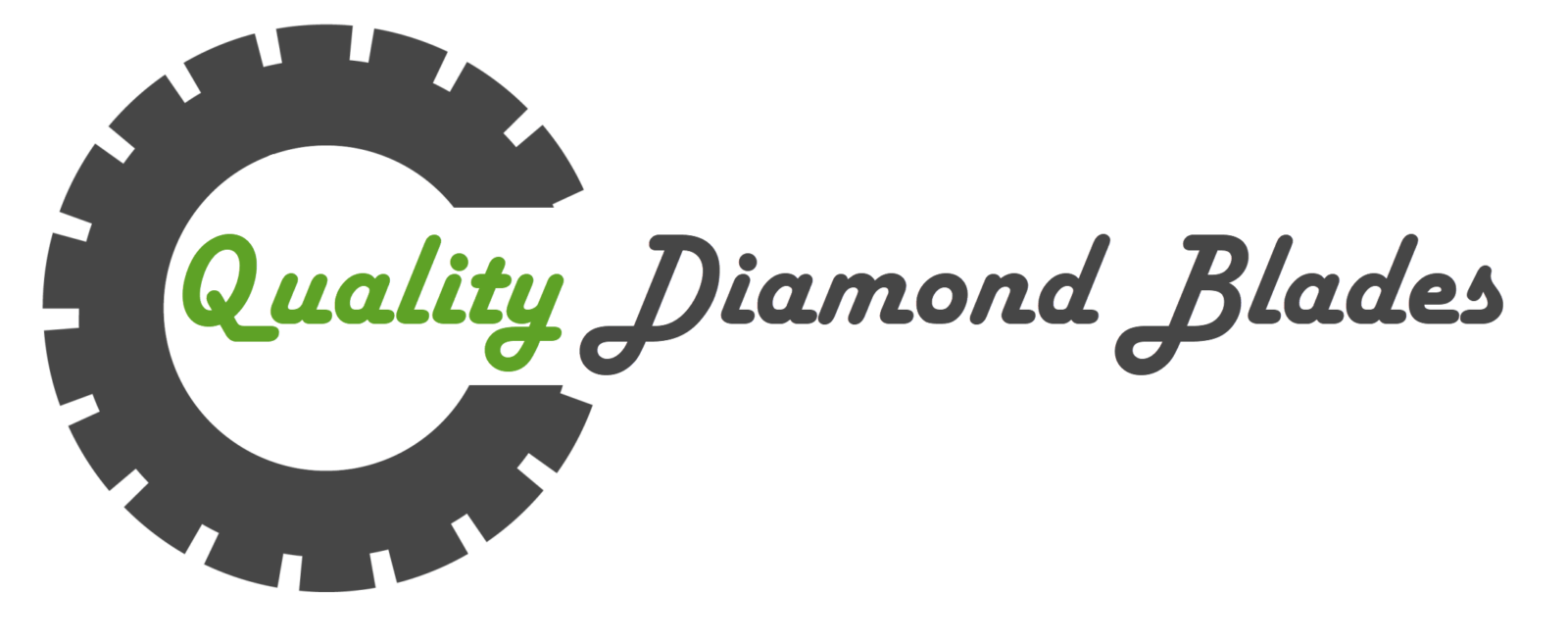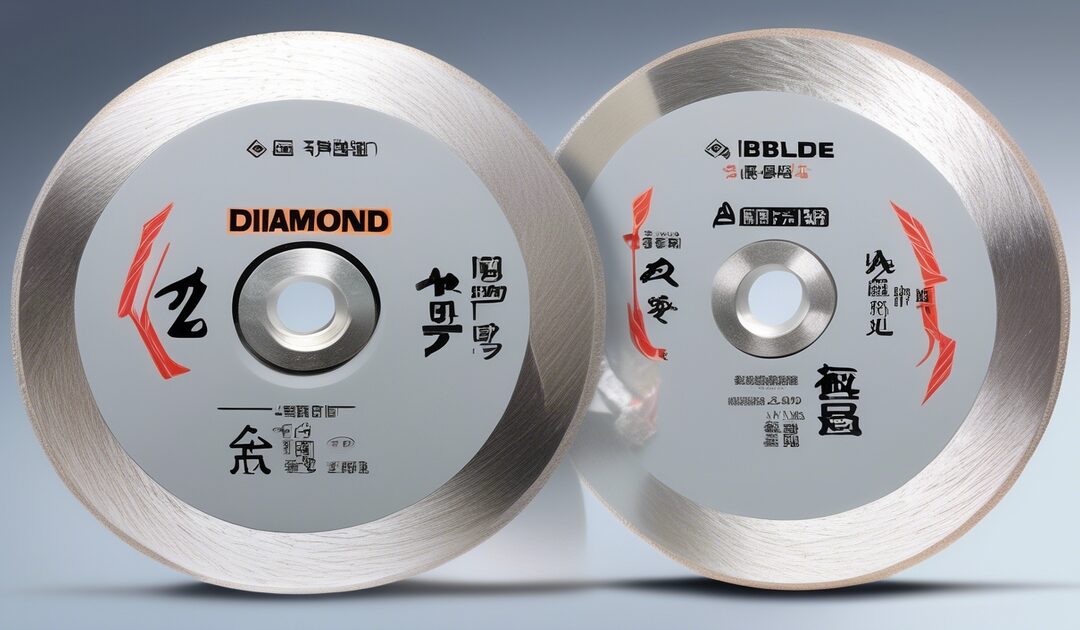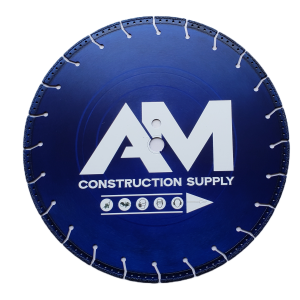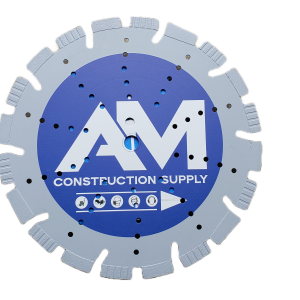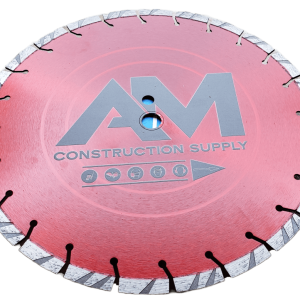Understanding the impact of blade tension on durability is crucial for maximizing the lifespan of your tools. Proper tension ensures efficient cutting and extends the life of your blades, while incorrect tension can lead to premature wear and breakage. By delving into this topic, you’ll grasp how minor adjustments in tension can make a significant difference in performance and longevity. Stay tuned as we explore the nuances of blade tension, strain, and its direct correlation to tool durability and uneven wear. Let’s dive into the world where a small tweak can mean the disparity between smooth sailing and constant setbacks.
Key Takeaways
- Proper blade tension is crucial for the durability of diamond blades.
- Understanding metal fatigue helps in optimizing blade tension for longevity.
- Low tension blades can lead to chatter and bounce issues during cutting.
- Maintaining the right tension enhances the durability and performance of the blades.
- Quality diamond blades make a significant difference in longevity and cutting precision.
- Choosing the appropriate blade based on your specific needs and tasks is essential for maximizing durability and efficiency.
Basics of Blade Tension
Physics of Cutting
Blade tension directly impacts the physics of cutting by maintaining blade stability during operation, causing strain on the beam of the band saw. This stability ensures accurate and precise cuts by reducing vibrations. The tension in the blade influences how it interacts with the material being cut, affecting the smoothness and accuracy of the cuts made.
Blade tension and cutting efficiency are closely linked; optimal tension levels ensure that the blade remains straight and aligned, enhancing its ability to penetrate materials smoothly. Proper tensioning results in improved cutting efficiency as it minimizes deflection, allowing for cleaner and faster cuts.
Understanding the physics behind blade tension is crucial for achieving optimal performance. It enables operators to make necessary adjustments to ensure that the blade is under the right amount of tension for effective cutting operations. By comprehending these principles, operators can maximize the capabilities of their bandsaw or bandknife blades through regular tension checks.
Role of Tension
The critical role of blade tension in the cutting process cannot be overstated. Proper tensioning is essential for maintaining blade integrity and preventing issues such as blade breakage or premature wear. Inadequate tension, such as a tensioned blade, can lead to poor cutting quality, blade drift, and may even result in damage to the machinery.
Tension significantly impacts the overall performance of bandsaw or bandknife blades. Correct tension settings are vital for ensuring that blades remain stable during operation, contributing to consistent and accurate cuts. Maintaining optimal tension levels enhances blade longevity and minimizes the risk of costly repairs or replacements.
Maintaining correct tension settings is paramount for ensuring durability. Insufficient or excessive tension can lead to a range of problems, including uneven wear, tooth damage, and ultimately, reduced blade lifespan. By adhering to recommended tension guidelines, operators can prolong the durability of their blades.
Impact on Durability
Blade tension plays a pivotal role in determining the durability of a blade. Properly tensioned blades exhibit enhanced resistance to wear and fatigue, resulting in an extended lifespan. Incorrect tension settings can accelerate wear and tear, compromising the structural integrity of the blade over time.
Incorrectly tensioned blades experience increased stress during operation, leading to premature fatigue and potential failure. Over time, this can result in frequent blade replacements, downtime for maintenance, decreased productivity, and regular tension checks. Optimal tensioning practices are essential for maximizing blade durability.
Properly maintained tensions directly correlate with extended blade durability by minimizing wear rates and ensuring consistent performance throughout the lifespan of the blade.
Understanding Metal Fatigue
Causes and Effects
Blade tension plays a pivotal role in the durability of cutting tools. Incorrect blade tension can stem from various factors, such as inadequate initial setup or wear over time. This misalignment can lead to metal fatigue, where the material weakens due to repeated stress.
Improper tension settings have immediate consequences, including reduced cutting accuracy and increased wear on the blade. Over time, these issues escalate, causing premature blade failure and potential safety hazards. Blade misalignment can even result in catastrophic failures during operation.
The quality of cuts and the lifespan of blades are heavily influenced by tension-related problems. Inconsistent tension can cause vibrations, leading to rough cuts and jagged edges. Moreover, excessive tension can overstress the blade, reducing its longevity and necessitating frequent replacements.
Prevention Strategies
To prevent incorrect blade tension, it is crucial to follow manufacturer guidelines for initial setup and regular maintenance. Regular calibration ensures that the blade remains within optimal tension limits, enhancing both performance and safety. Implementing a routine inspection schedule helps detect any deviations early on.
Maintaining optimal tension settings involves proactive measures like using reliable tension gauges for accurate readings. Adjusting the tension based on material thickness and type can also contribute to prolonged blade life. Ensuring proper lubrication reduces friction and minimizes wear on the blade teeth.
Avoiding tension-related problems requires operators to be vigilant during use. Monitoring cutting performance for signs of vibration or irregularities can indicate potential tension issues. Educating staff on proper handling techniques and providing training sessions on adjusting blade tension can further enhance durability.
Exploring Low Tension Blades
Benefits and Drawbacks
Maintaining the correct blade tension is crucial for ensuring longevity and efficiency. Adequate tension reduces premature blade breakage by preventing excessive flexing during operation. This leads to improved cutting precision and reduced instances of blade drift, resulting in smoother cuts.
Ignoring tension requirements can lead to a myriad of issues, including increased chances of blade slippage and misalignment. This not only affects the quality of cuts but also poses safety risks to the operator. In contrast, adhering to proper tensioning guidelines enhances blade stability and overall performance, contributing to enhanced durability.
Proper tensioning plays a pivotal role in enhancing blade durability by minimizing wear and tear on the blade teeth. It ensures consistent cutting performance over time, reducing the need for frequent replacements. However, inadequate tension can result in decreased blade life and compromised cutting quality, ultimately impacting productivity.
Ideal Applications
In metalworking industries, maintaining optimal blade tension is vital for tasks such as precision cutting and shaping various metals. For woodworking applications like furniture making or carpentry, correct tension levels are essential for achieving clean and accurate cuts on different types of wood.
Different materials and cutting tasks may require varying levels of tension to optimize performance. For instance, cutting dense hardwoods necessitates higher tension settings compared to softer woods to prevent deflection and ensure precise cuts. Understanding these nuances enables operators to tailor the tension according to specific requirements.
Optimizing blade tension is particularly critical in scenarios where high precision and consistency are paramount, such as in the manufacturing of intricate components or delicate materials like ceramics. By fine-tuning the tension settings based on material properties and cutting demands, operators can achieve superior results while prolonging blade life.
Chatter and Bounce Challenges
Hook Tooth Blades
When using hook tooth blades, it’s crucial to understand their unique tension requirements. These blades have a specific design that impacts how much tension they need to perform optimally. To set the correct tension, ensure that the blade is snug but not overly tight for efficient cutting.
Blade tension plays a significant role in the performance of hook tooth blades. The design of these blades, with their deep gullets and aggressive tooth geometry, requires precise tensioning to prevent issues like flutter method or poor cutting quality. Adjust the tension carefully to avoid chatter or bounce during cutting.
- Unique considerations for blade tension with hook tooth blades
- Design impact on tension requirements
- Tips for setting optimal tension
Hard Woods Impact
When cutting hard woods, blade tension becomes even more critical. The density and toughness of hard woods necessitate precise tensioning to achieve clean cuts and avoid premature blade wear. Challenges arise due to the resistance offered by hard woods during cutting.
Achieving durability when cutting hard woods requires attention to detail in blade tensioning. Improper tension can lead to deflection, resulting in inaccurate cuts or damage to the material. To overcome these challenges, adjust the blade tension according to the hardness and thickness of the wood being cut.
- Impact of blade tension on cutting hard woods
- Challenges and considerations for hard wood materials
- Recommendations for ensuring durability
Enhancing Durability Through Proper Tension
Setting the Right Tension
To set the correct tension for bandsaw or bandknife blades, start by referring to the manufacturer’s guidelines. Precision is crucial when adjusting tension settings to ensure optimal performance and longevity. Incorrect tension can lead to premature blade wear and reduced beam strength.
When setting the tension, ensure the blade is properly aligned on the wheels before adjusting. Gradually increase the tension while monitoring the blade’s position until it produces a clear, consistent sound during operation. Avoid over-tensioning, as it can cause unnecessary stress on the blade and affect its durability.
- Align the blade correctly on the wheels.
- Gradually increase tension while monitoring alignment.
- Stop increasing tension once a clear, consistent sound is achieved.
Maintenance Tips
For prolonged durability, regular maintenance related to blade tension is essential. De-tensioning after each use helps relieve stress on the blade, extending its lifespan and maintaining beam strength. Implementing a routine maintenance schedule can significantly impact the overall performance of your equipment.
When de-tensioning, slowly release pressure on the blade until it becomes slack before storing or when not in use for an extended period. This practice prevents unnecessary strain on the blade material and ensures it retains its structural integrity over time.
- Regularly de-tension after each use.
- Slowly release pressure until slack before storage.
- Implement a routine maintenance schedule for optimal results.
Quality Diamond Blades Difference
Superior Durability
Blade tension significantly impacts the durability of diamond blades. Correct tension ensures the blade withstanding heavy usage. Maintaining optimal tension levels directly correlates with extended blade lifespan. The consistent application of proper tensioning techniques is crucial for ensuring long-lasting performance.
Achieving superior durability in diamond blades requires meticulous attention to tension settings. Proper blade tension contributes to the blade’s ability to endure tough cutting tasks. Regular maintenance of tension levels is essential for maximizing the lifespan of the blade. Consistency in tensioning practices is key to preserving the blade’s structural integrity over time.
Optimal Tension Settings
Determining the optimal tension settings for diamond blades involves considering various factors. Blade type, material being cut, and machine specifications all influence the ideal tension level. Achieving the right balance in tension settings enhances cutting precision and prolongs blade life. Regularly adjusting and fine-tuning tension settings is crucial for ensuring optimal performance and longevity.
Factors such as blade diameter, core hardness, and segment design impact the ideal tension level for specific cutting applications. Understanding these variables helps operators calibrate their equipment effectively. Maintaining optimal tension settings minimizes wear on the blade and ensures consistent cutting results. By following manufacturer recommendations and conducting regular inspections, users can achieve maximum efficiency and performance from their diamond blades.
Case Studies
Real-World Applications
Blade tension plays a pivotal role in the durability and performance of cutting tools. Incorrect tension settings can lead to premature wear and tear, impacting the blade’s lifespan significantly. In a study conducted by a leading construction company, improper blade tension resulted in frequent replacements and increased downtime on projects.
Industry experts emphasize the necessity of maintaining optimal blade tension for various applications. For instance, in the woodworking sector, a case study revealed that blades with inadequate tension were prone to deflection, affecting the precision of cuts. This not only compromised the quality of products but also posed safety risks to operators.
-
Pros:
- Extends blade lifespan
- Enhances cutting accuracy
- Reduces maintenance costs
-
Cons:
- Incorrect tension leads to inefficiency
- Increases risk of accidents
Customer Success Stories
Maintaining the correct blade tension has yielded remarkable results for numerous customers across different industries. A manufacturing plant reported a significant improvement in production efficiency after implementing precise tensioning protocols. The reduced need for blade replacements translated into substantial cost savings for the company.
One customer shared their experience of enhanced product quality post adopting proper blade tension practices. The sharper cuts achieved through optimal tension settings not only elevated their output standards but also garnered positive feedback from clients. This underscores how attention to detail, such as blade tension, can directly impact customer satisfaction levels.
- Proper tensioning enhances product quality.
- Optimal settings lead to cost savings.
- Precise tensioning boosts production efficiency.
Choosing the Right Blade for Your Needs
Factors to Consider
Blade tension plays a crucial role in blade life and overall cutting performance. When adjusting blade tension, it’s essential to consider several key factors. Firstly, blade changes frequency impacts the required tension level. Blades that are changed frequently may need lower tension compared to those used for extended periods.
The type of material being cut influences the blade tension requirements. Harder materials like metals necessitate higher tension levels for efficient cutting. Conversely, softer materials may require lower tension to prevent damage to the blade and ensure smooth operation.
Other variables such as bandsaw operation speed and the thickness of the material also affect blade tension needs. Higher speeds generally require increased tension to maintain cutting accuracy and prevent blade deflection. Thicker materials typically demand higher tension levels to withstand the cutting forces involved.
Quality Diamond Blades Solutions
Quality diamond blades offer a durable solution for various cutting applications. Unlike traditional blades, diamond blades have unique tension requirements due to their composition. Diamond blades are known for their exceptional hardness and ability to cut through tough materials with precision.
One of the key benefits of using quality diamond blades is their longevity. Due to their robust construction, diamond blades have an extended blade life compared to conventional blades. This durability translates into cost savings over time as fewer blade replacements are needed.
Moreover, diamond blades provide superior cutting performance and efficiency. Their ability to maintain sharpness over prolonged use ensures consistent cutting results without compromising on quality. Whether used for concrete, asphalt, or other challenging materials, diamond blades deliver reliable performance.
- Pros of Quality Diamond Blades:
- Longevity due to exceptional hardness
- Consistent cutting performance
- Cost-effective in the long run
Maintenance and Care Tips
Regular Checks
Blade tension plays a crucial role in ensuring the longevity of your saw blade. Regular checks are essential to maintain optimal performance. Establish a schedule for routine inspections, ideally before each use, to guarantee proper tension levels. By consistently monitoring and adjusting the tension, you can significantly extend the lifespan of your blade.
It is recommended to check the tension of your blade at least once a week or more frequently if you use it extensively. This frequent inspection will help you identify any deviations from the ideal tension level promptly. Consistent monitoring allows you to address issues early on, preventing potential damage that could arise from insufficient or excessive tension.
Adjusting Tension
Adjusting blade tension is a skill that every user should master to maximize cutting efficiency and blade lifespan. When facing different cutting tasks, it’s crucial to fine-tune the tension settings accordingly. For softer materials, lower tension might be suitable, while harder materials may require higher tension levels.
To adjust the blade tension effectively, start by loosening the tension slightly and then gradually tightening it while listening for the right pitch or sound. This process helps in achieving the perfect balance between too loose and too tight, ensuring optimal performance without placing undue stress on the blade.
- Regularly inspecting
- Adjusting based on material
- Preventing premature wear
Final Remarks
You’ve delved deep into the realm of blade tension and its profound impact on durability. From understanding the basics to exploring real-life challenges and solutions, you’re now equipped with the knowledge to enhance your cutting experience. Remember, proper tension isn’t just about tightness; it’s about finding that sweet spot where your blade sings through materials effortlessly.
As you embark on your next cutting project, keep in mind the insights gained here. Choose your blade wisely, maintain it diligently, and watch how durability becomes your best ally in achieving precise and efficient cuts. Your tools are an extension of your craftsmanship – treat them with care, and they’ll reward you with impeccable results every time.
Frequently Asked Questions
How does blade tension affect durability?
Blade tension plays a crucial role in determining the lifespan of a blade. Proper tension ensures the blade operates efficiently, reducing wear and tear. Too much tension can lead to premature breakage, while too little tension may cause poor cutting performance.
What are the signs of improper blade tension?
Signs of incorrect blade tension include excessive vibration, rough cuts, and frequent blade changes. These issues not only affect cutting precision but also contribute to faster wear on both the blade and the equipment.
Can low tension blades still be effective?
Low tension blades can be effective for specific applications where minimal force is required. However, they are more prone to deflection and chatter, impacting both cut quality and blade longevity. It’s essential to balance tension levels based on the material being cut.
How can proper tension enhance blade durability?
Proper blade tension distributes stress evenly across the blade, reducing the risk of fatigue and premature failure. By maintaining optimal tension levels, you can maximize the lifespan of your blades and ensure consistent cutting performance over time.
Why is choosing the right blade important for durability?
Selecting the appropriate blade based on material type, cutting speed, and machine compatibility is critical for maximizing durability. Using the wrong blade can result in increased wear, reduced efficiency, and potential safety hazards during operation. Always match the blade to your specific cutting needs.
